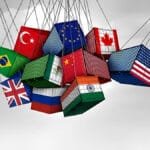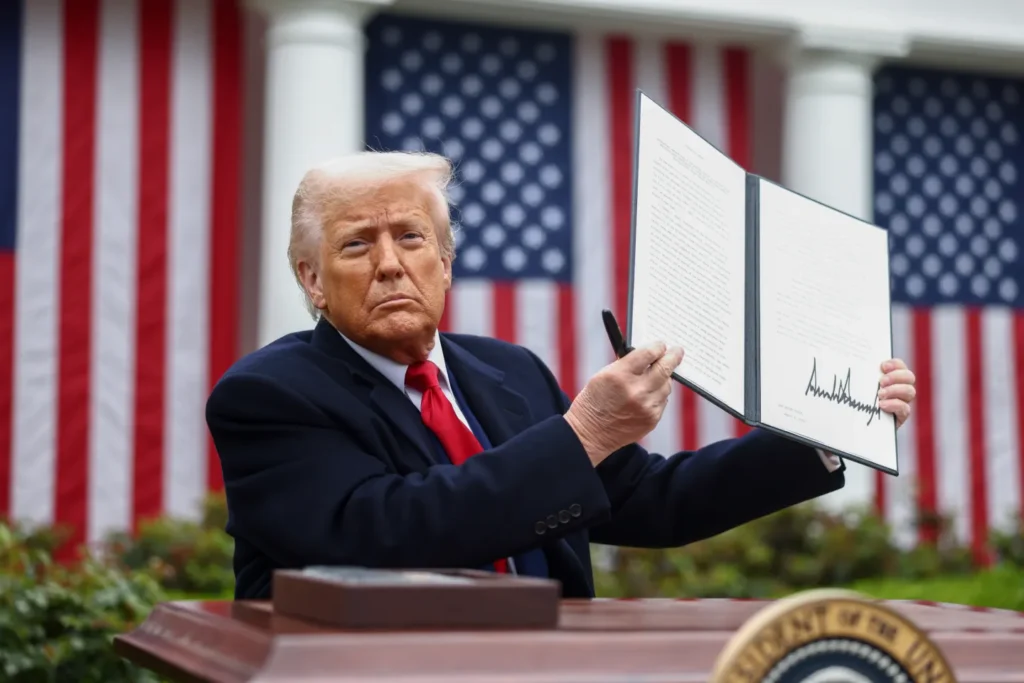In the grand theater of the global economy, the curtain has lifted on a sobering act. The World Bank’s recent Global Economic Prospects Report has declared what many had feared but few had fully grasped— the world economy, though not in outright recession, is drifting through its weakest stretch since the 2008 financial crisis. Like a patient with a steady pulse but failing energy, the global economy is on life support.
Growth is projected at a modest 2.3 percent for 2025, a sharp downgrade from earlier expectations. The figure is neither catastrophic nor celebratory. It’s the kind of number that doesn’t inspire headlines in casual conversations but sends shivers through policymaking corridors. Economists describe it as a growth rate that’s just high enough to avoid the official designation of recession but low enough to imperil livelihoods, aspirations, and progress, especially in the world’s most vulnerable regions.
What makes this slowdown particularly unsettling is its breadth? The World Bank estimates that growth forecasts have been slashed in nearly 70 percent of all economies, spanning every continent and income level. This is not a localized problem. It’s a global malaise. The growth engines that once propelled countries across the development spectrum have lost their torque. Trade has cooled. Investment has slowed. Uncertainty, once confined to volatile markets, now casts long shadows across boardrooms and parliaments.
Part of the story lies in the unraveling of global trade dynamics. Over the past two decades, trade was the lifeblood of emerging markets. Countries from Vietnam to Kenya to Colombia rode the wave of export-led growth, opening their economies and integrating into global supply chains. But recent years have brought an upsurge in trade tensions. Major powers have turned inward.
Tariff barriers have risen like new walls, and regional blocs have tightened their belts in the name of national security or political leverage. Trade, which grew at an annual average of 5 percent in the 2000s, is now struggling to cross even the 3 percent threshold. For many developing nations, this represents not just a slowdown in numbers but a structural threat to their economic models.
The Domino Effect: Investment Retreat and Policy Paralysis
The effects ripple outward. Investment, which often follows the trail of trade, has become cautious, even scarce. Uncertainty around global regulations, monetary policy, and geopolitical frictions has prompted businesses to delay capital expenditures. When companies hesitate to build factories, hire workers, or expand into new territories, the effects are immediate and tangible. Jobs dry up. Wages stagnate. Public revenues fall. Infrastructure projects stall.
At the heart of this fragile scenario is the debt conundrum. Over the past decade, global debt— both public and private— has climbed to record levels. Many developing economies, in particular, have borrowed heavily to fund social programs, infrastructure, and pandemic responses. These expenditures were necessary, even lifesaving. But now, with growth slowing and inflation persisting, debt repayment is becoming an albatross. For low-income countries, the burden is doubly cruel: limited fiscal space and declining revenues mean there is little room to maneuver.
A Regional Breakdown: Struggles, Slowdowns, and Slight Bright Spots
This is especially true in Sub-Saharan Africa, where growth is expected to edge up slightly to 3.7 percent in 2025, still well below the region’s potential and historical averages. The region’s youthful population and rapidly urbanizing cities present immense opportunities, but without robust economic expansion, the promise of prosperity remains just out of reach. The World Bank estimates that without significant reforms and support, many African countries may need another two decades to regain the economic trajectory they lost during the pandemic.
Latin America and the Caribbean tell a similarly restrained story. Growth in 2025 is expected to remain flat at 2.3 percent, with marginal improvements in the years to follow. While not in crisis, the region is treading water. For countries like Argentina, grappling with inflation and debt, or Brazil, facing governance challenges and fiscal constraints, slow growth limits the tools available to fight inequality or invest in green transitions.
Even regions with relatively strong outlooks are not immune. South Asia, buoyed by India’s digital dynamism and industrial expansion, is projected to grow at 5.8 percent in 2025. Yet, that figure still represents a moderation from recent years. In East Asia and the Pacific, where China’s slowdown continues to send tremors, growth is forecast at 4.5 percent. For economies heavily reliant on Chinese demand— from Indonesia’s commodities to Australia’s exports— this means a prolonged period of adjustment.

The Human Side of Stagnation
But perhaps the most poignant part of this story is the human cost hidden within these percentages. When global growth slows, it is the individual— not the abstract “economy”— who feels the weight. Sluggish expansion translates to fewer jobs, lower wages, and stalled progress in health, education, and infrastructure. For families in Dakar, Dhaka, or Detroit, the result is often the same: aspirations deferred, resilience tested.
In many developing countries, the effects of this stagnation are already visible. Per capita income growth, a key measure of individual economic well-being, is projected to hover around 2.9 percent in 2025— more than a full percentage point below the pre-pandemic average. That difference might sound minor, but compounded over time, it can significantly widen the gap between advanced economies and those still catching up. The dream of convergence— that developing countries could gradually close the income and opportunity divide— is fading into a more uncertain future.
The labor market implications are equally sobering. Job creation, particularly in economies with large youth populations, is stalling. Informality remains high. Labor force participation among women and marginalized groups is constrained by limited opportunity and structural barriers. In regions already burdened by high unemployment, the current economic drift could aggravate social unrest and political volatility.
The World Bank’s Roadmap: Recovery Through Reform
All of this paints a grim picture, but it is not without hope. The World Bank’s report does more than diagnose a problem— it offers a prescription. Central to its recommendations is the revival of global cooperation. The fracturing of trade relationships and the rise of protectionist policies have dealt a heavy blow to the post-war economic order. But history shows that cooperation, even amid geopolitical tensions, can yield mutual benefits. If major economies can begin to resolve trade disputes, reduce tariffs, and foster predictable policy environments, the result could be a modest but meaningful boost to growth.
There is also a call for domestic reform. Countries, particularly in the developing world, are urged to modernize tax systems, improve public spending efficiency, and invest in human capital. These may sound like technical fixes, but their impact can be transformative. Equipping workers with the skills demanded by modern labor markets, for instance, can help bridge the gap between unemployment and productivity. Similarly, enhancing institutional quality— from courts to customs— can unlock private investment and foster entrepreneurship.
Protecting the Vulnerable in an Age of Austerity
Perhaps, most importantly, the report emphasizes the need to protect the most vulnerable. In a period of sluggish growth and fiscal tightening, there is a risk that social safety nets will be the first to suffer. But this is precisely when they are most needed. Strengthening social protection, ensuring food security, and expanding access to health and education must remain central to policy agendas.
Emergency support will also be essential for countries facing conflict or climate disasters. From Ukraine to Sudan, and from the Horn of Africa to the Caribbean, the dual shocks of violence and environmental degradation are eroding resilience. Multilateral institutions, bilateral donors, and the private sector all have roles to play in cushioning these blows and helping nations rebuild.
The Danger of Complacency: When Slow Feels Safe
The road ahead is undeniably difficult. The 2020s have begun not with a bang, but with a slow fade— a period defined not by crisis or boom, but by fatigue and friction. This era may not be remembered for spectacular crashes, but rather for the quiet erosion of opportunity, the unseen burdens on households, and the missed milestones in development.
Still, the future is unwritten. There are levers that can be pulled, coalitions that can be built, and policies that can be sharpened. The global economy may be on life support, but it is still breathing. Reviving its vitality will require not just technocratic tweaks but political will, moral clarity, and a renewed commitment to shared prosperity.
Choosing Interdependence Over Isolation
At a time when the temptation is to retreat inward— to focus on national priorities, local agendas, and short-term gains— the lesson of this moment is precisely the opposite. Interdependence is not a liability; it is a lifeline. Global challenges, from pandemics to climate change to economic stagnation, demand global solutions.
The world has faced worse before and emerged stronger. The 1930s gave way to the post-war boom. The chaos of the 1970s preceded the rise of globalization. Even the 2008 financial crisis, as severe as it was, spurred reforms that stabilized the system. Today, the challenge is quieter but no less consequential.
In the absence of dramatic headlines or fiscal collapses, the danger is that this slow-motion decline will be ignored. That would be a mistake. Because while the numbers may lack drama, their implications are profound. Growth at 2.3 percent may not sound like a crisis, but for billions of people waiting for opportunity, it might as well be.









